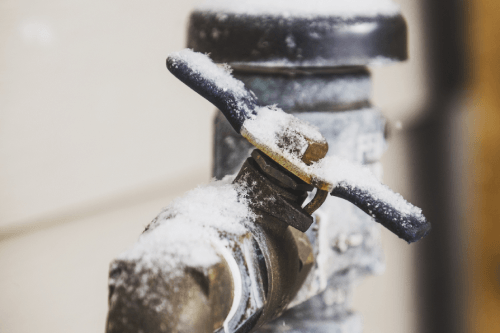Crucial Tips to Avoid Frozen Pipes in Cold Weather: Expert Insights
Crucial Tips to Avoid Frozen Pipes in Cold Weather: Expert Insights
Blog Article
They are making a few great pointers on the subject of 6 Ways to Prevent Frozen Pipes as a whole in this post underneath.

Cold weather can damage your plumbing, especially by freezing pipes. Here's just how to avoid it from taking place and what to do if it does.
Introduction
As temperature levels drop, the threat of frozen pipelines boosts, possibly leading to costly fixings and water damage. Understanding just how to prevent frozen pipelines is critical for home owners in cool environments.
Prevention Tips
Insulating at risk pipelines
Cover pipes in insulation sleeves or utilize warm tape to shield them from freezing temperature levels. Concentrate on pipes in unheated or external areas of the home.
Home heating techniques
Keep indoor areas properly heated, specifically locations with pipes. Open cupboard doors to enable warm air to circulate around pipelines under sinks.
How to identify icy pipelines
Seek lowered water flow from faucets, uncommon smells or sounds from pipes, and visible frost on exposed pipelines.
Long-Term Solutions
Structural changes
Take into consideration rerouting pipes far from outside walls or unheated areas. Include extra insulation to attics, cellars, and crawl spaces.
Updating insulation
Invest in high-quality insulation for pipes, attic rooms, and wall surfaces. Proper insulation assists preserve regular temperatures and minimizes the threat of icy pipes.
Safeguarding Outside Plumbing
Garden pipes and outside faucets
Detach and drain garden hose pipes prior to wintertime. Install frost-proof faucets or cover outside taps with insulated caps.
Comprehending Icy Pipelines
What triggers pipes to freeze?
Pipes freeze when revealed to temperature levels below 32 ° F (0 ° C) for expanded periods. As water inside the pipelines freezes, it increases, putting pressure on the pipeline wall surfaces and possibly creating them to burst.
Dangers and damages
Icy pipelines can result in water supply disruptions, residential property damage, and expensive repair services. Burst pipes can flood homes and cause extensive structural damages.
Indicators of Frozen Piping
Recognizing icy pipes early can prevent them from bursting.
What to Do If Your Pipelines Freeze
Immediate actions to take
If you think icy pipelines, keep taps available to ease pressure as the ice thaws. Utilize a hairdryer or towels taken in hot water to thaw pipelines slowly.
Conclusion
Stopping frozen pipelines requires positive measures and quick responses. By comprehending the reasons, indicators, and safety nets, home owners can shield their pipes throughout cold weather.
5 Ways to Prevent Frozen Pipes
Drain Outdoor Faucets and Disconnect Hoses
First, close the shut-off valve that controls the flow of water in the pipe to your outdoor faucet. Then, head outside to disconnect and drain your hose and open the outdoor faucet to allow the water to completely drain out of the line. Turn off the faucet when done. Finally, head back to the shut-off valve and drain the remaining water inside the pipe into a bucket or container. Additionally, if you have a home irrigation system, you should consider hiring an expert to clear the system of water each year.
Insulate Pipes
One of the best and most cost-effective methods for preventing frozen water pipes is to wrap your pipes with insulation. This is especially important for areas in your home that aren’t exposed to heat, such as an attic. We suggest using foam sleeves, which can typically be found at your local hardware store.
Keep Heat Running at 65
Your pipes are located inside your walls, and the temperature there is much colder than the rest of the house. To prevent your pipes from freezing, The Insurance Information Institute suggests that you keep your home heated to at least 65 degrees, even when traveling. You may want to invest in smart devices that can keep an eye on the temperature in your home while you’re away.
Leave Water Dripping
Moving water — even a small trickle — can prevent ice from forming inside your pipes. When freezing temps are imminent, start a drip of water from all faucets that serve exposed pipes. Leaving a few faucets running will also help relieve pressure inside the pipes and help prevent a rupture if the water inside freezes.
Open Cupboard Doors
Warm your kitchen and bathroom pipes by opening cupboards and vanities. You should also leave your interior doors ajar to help warm air circulate evenly throughout your home.

Do you enjoy reading about 6 Ways to Prevent Frozen Pipes? Make a review further down. We will be happy to know your reactions about this content. We hope that you come back again in the future. Are you aware of another person who is involved in the niche? Why not share it. Thanks a bunch for your time. Return soon.
View Website Report this page